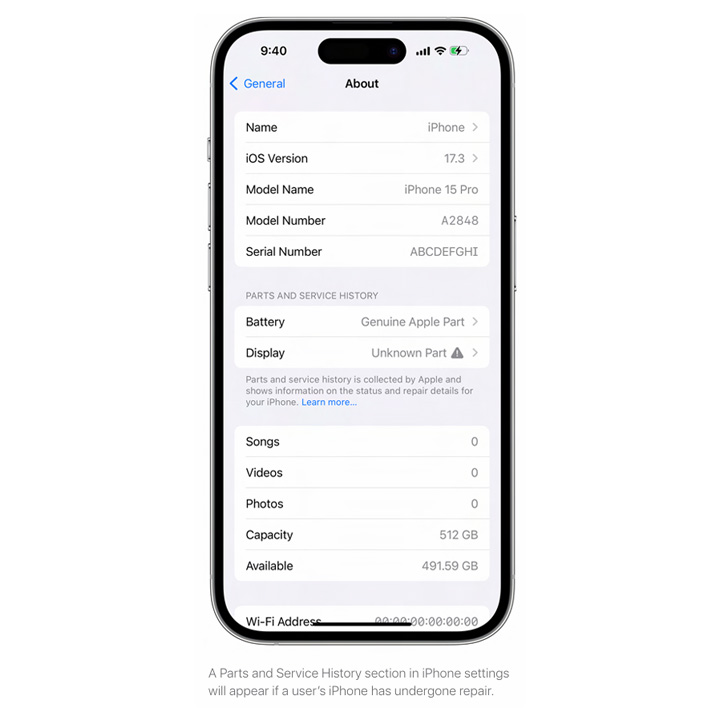Apple is inching towards a more open repair ecosystem, according to its recent white paper 16 titled “Longevity, by Design” which outlines limited support for third-party components.

The most significant change involves True Tone functionality. Currently, Apple disables this feature (which adjusts display white balance) on iPhones with non-genuine displays.
Later this year, the company will allow True Tone activation “to the best performance that can be provided” with third-party parts. However, Apple warns of potential drawbacks like inaccurate colors due to compatibility issues.
Battery health metrics are also getting a tweak. While users will see data for third-party batteries, Apple will prominently display a disclaimer about their unverifiability. This stems from the company’s concerns about used batteries with fabricated metrics being sold as new.
Apple says there is only one scenario where they would disable a feature and that is when a Face ID or Touch ID sensor is replaced with a third-party part.
“We will disable authentication to ensure security and privacy. Other aspects of the part unrelated to authentication such as cameras or buttons continue to operate per the capability of the part installed,” the white paper read under the Parts and Service History section.

These changes follow a pattern of slow-drip reform. In 2022, the iPhone 14 boasted a supposedly more repair-friendly design but display repair restrictions remained.
Then came the April announcement of genuine used parts being available for iPhone 15 repairs starting later this year.
Apple’s motivations here are unclear. Perhaps it’s a response to growing right-to-repair movements or potential regulatory pressure in the US and in Europe. Whatever the reason, such concession is a step in the right direction of a more open repair landscape.

YugaTech.com is the largest and longest-running technology site in the Philippines. Originally established in October 2002, the site was transformed into a full-fledged technology platform in 2005.
How to transfer, withdraw money from PayPal to GCash
Prices of Starlink satellite in the Philippines
Install Google GBox to Huawei smartphones
Pag-IBIG MP2 online application
How to check PhilHealth contributions online
How to find your SIM card serial number
Globe, PLDT, Converge, Sky: Unli fiber internet plans compared
10 biggest games in the Google Play Store
LTO periodic medical exam for 10-year licenses
Netflix codes to unlock hidden TV shows, movies
Apple, Asus, Cherry Mobile, Huawei, LG, Nokia, Oppo, Samsung, Sony, Vivo, Xiaomi, Lenovo, Infinix Mobile, Pocophone, Honor, iPhone, OnePlus, Tecno, Realme, HTC, Gionee, Kata, IQ00, Redmi, Razer, CloudFone, Motorola, Panasonic, TCL, Wiko
Best Android smartphones between PHP 20,000 - 25,000
Smartphones under PHP 10,000 in the Philippines
Smartphones under PHP 12K Philippines
Best smartphones for kids under PHP 7,000
Smartphones under PHP 15,000 in the Philippines
Best Android smartphones between PHP 15,000 - 20,000
Smartphones under PHP 20,000 in the Philippines
Most affordable 5G phones in the Philippines under PHP 20K
5G smartphones in the Philippines under PHP 16K
Smartphone pricelist Philippines 2024
Smartphone pricelist Philippines 2023
Smartphone pricelist Philippines 2022
Smartphone pricelist Philippines 2021
Smartphone pricelist Philippines 2020